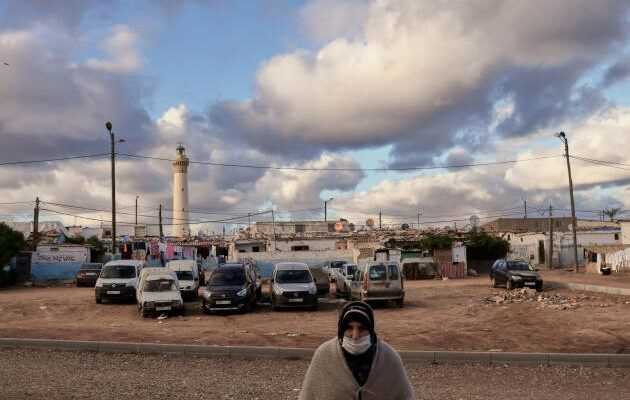ReportingOn one side, a row of chic restaurants and beautiful villas, on the other, a shanty town. On the Casablanca seafront, no one is surprised by this great social gap, unchanged for decades.
It is a peninsula in the middle of the Casablanca seafront. Between the port, the Hassan-II mosque and the beaches as far as the eye can see. At its tip, the El Hank lighthouse illuminates the economic capital of Morocco with its circular flashes. To access it, a road serves, on one side, a row of upscale restaurants, on the other, a city that looks like a slum, surrounded by a wall from which emerge tin roofs. The postcard of social inequalities is striking.
These two worlds have shared this 16 hectare piece of land for decades. In Casablanca, this cohabitation hardly seems to shock. The eye is accustomed to the great social disparities in this metropolis of more than four million inhabitants, where villas rub shoulders with odds and ends, where, on the roads, Mercedes double carts pulled by donkeys. And where, consistently since the 1980s, the richest 10% hold half of national income, while the poorest 50% have less than 15%, according to the 2022 report of the Laboratory on Global Inequalities.
At nightfall, an uninterrupted ballet of beautiful cars brings life to the El Hank peninsula. Businessmen, young Casablancais dressed in luxury, from shoes to handbags, meet there for an afterwork or a dinner. But they seem reluctant to venture beyond the restaurant surroundings. The place is not a place where one comes to stroll in the evening, despite the promise of a breathtaking view, from the point, on the swell coming to crash against the rocky reefs.
Dilapidated housing
A legendary address on the peninsula, Le Cabestan is celebrating its 100th anniversary. The establishment has attracted many celebrities – artists, politicians, businessmen and crowned heads. Today it has a rather young and festive reputation. Here, between the plates of tapas, fish and shellfish prepared by Michelin-starred chefs, cocktails and wines, the bill can quickly climb to 2,600 dirhams (250 euros), the amount of the Moroccan minimum wage, or the income of a good number of inhabitants of the city opposite.
Partitions have been installed – sometimes walls, sometimes simple sheets – to separate families and afford a little privacy.
This city known as the “Mokhaznis”, Le Cabestan saw it born in the 1950s. Inside its enclosure, huts built identically, horizontal, 64 square meters, composed of three rooms and a patio. The blocks are separated by alleys where the clotheslines are entangled. “Under the protectorate, the site had been used to relocate members of the auxiliary forces after the Second World War, explains Karim Rouissi, architect and member of the Casamémoire association. Over time, these families found themselves cramped and managed to enlarge the living space with what they found in materials: planks, sheets, concrete … The courtyards were covered, houses were raised. “
You have 54.2% of this article to read. The rest is for subscribers only.
